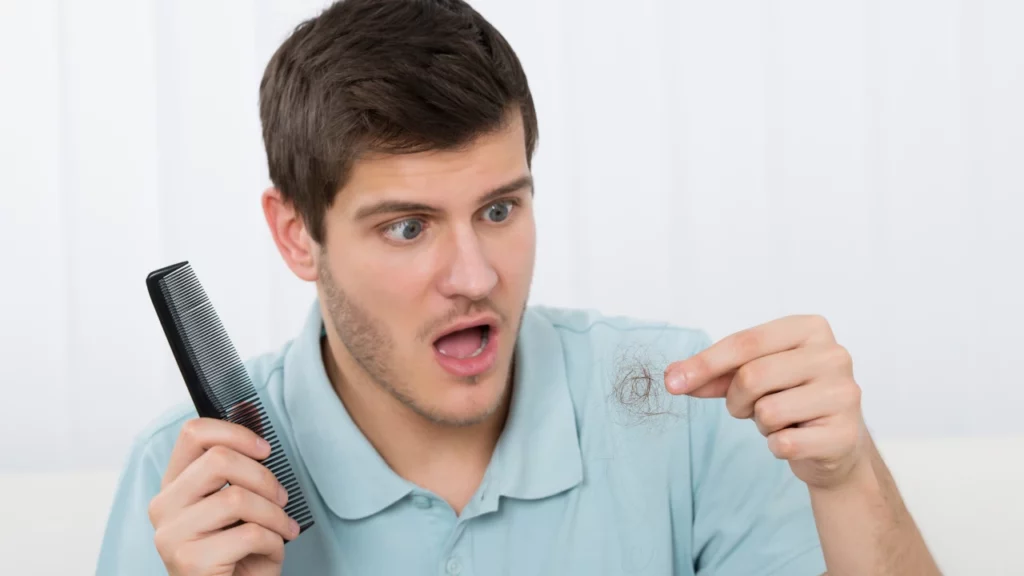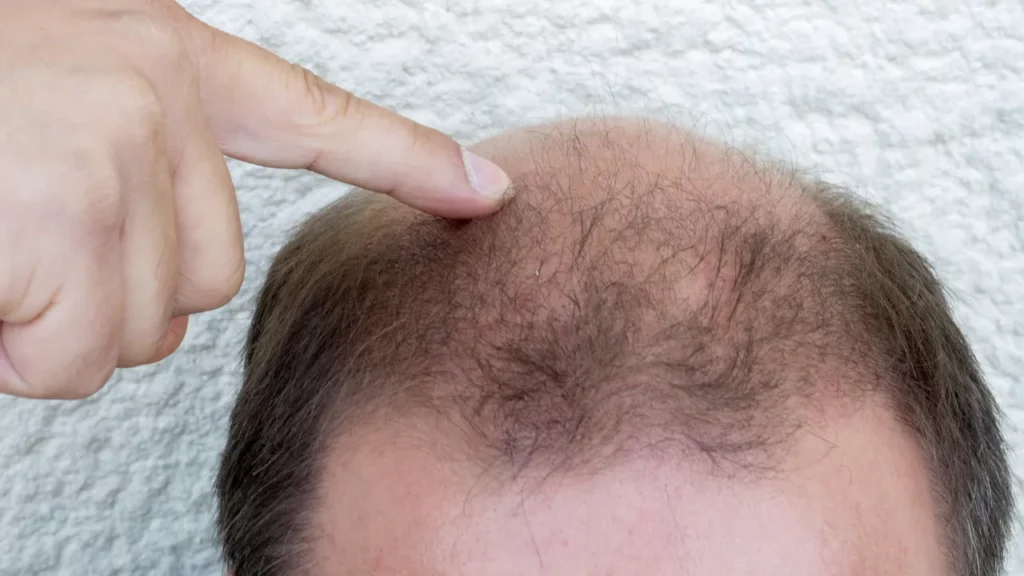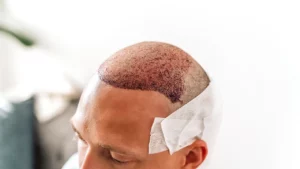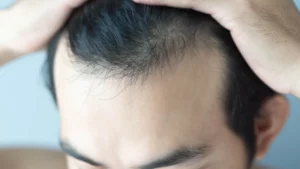Shock loss is a natural occurrence in hair transplant treatment. It is the loss of immature hair that occurs before fully healthy hair grows. There are several different phases in the hair transplant shock loss timeline, and the characteristics of each phase are different.

30 days after hair transplant, shock loss period ends. Now your transplanted hair starts to grow healthily. If you care about hair treatment, hair follicles will develop safely. However, the hair transplant growth timeline continues. You should continue to keep your lifestyle healthy.
What is Hair Transplant Shock Loss?
Shock loss in hair transplant refers to the hair loss experienced in the months following the treatment. In hair transplantation, the body must adapt to hair follicles. After the treatment, the scalp reacts to the surgery and as a result, shock loss occurs.
A blood supply is needed for the transplanted hair to fully adhere. Approximately 3-4 months are required for a fully efficient blood supply. As you go through the stages of the hair transplant recovery timeline, you may encounter short periods such as shock loss.
30 days after hair transplant, the shock loss phase begins to end. Temporary hair thinning and loss ends. Much higher quality and fuller hair grows in place of the hair that falls out. For some people, shock loss after hair transplant may take longer.
Common Causes of Shock Loss After Hair Transplant
Even though shock loss is a natural process, there are some factors that will make its effects last longer. Temporary hair loss is not a situation experienced by everyone. You should remember that shock loss is a reaction of the body to hair transplant surgery.
- Telogen effluvium: It is a condition associated with hair loss. It may occur if the hair follicles enter the resting phase much sooner than expected. Its effect may increase due to stress. It is not a normal part of hair transplant shock loss timeline.
- Blood supply: Adequate blood flow is needed for hair follicles to survive. Blood flow may be disrupted due to hair transplant. The effect of shock loss may be greater due to this disruption. The shed hair grows back within the hair transplant shock loss timeline.
- Scalp trauma: Shock loss is a reaction of the scalp to surgery. It only occurs in the area where hair transplantation is performed. Depending on your body’s reaction, the hair transplant shock loss timeline may take a long time.
Learning the factors can help you understand how the hair transplant shock loss timeline will progress. It is important to remember that every individual is unique. Even though shock loss is a temporary phase, some people may experience it longer or shorter.
Shock Loss and Permanent Hair Loss Difference
Shock loss is a natural condition within the hair transplant growth stages. It is a situation that begins to appear in the second stage after treatment. Hair falls out, but new hair is encouraged to grow. For this reason, it is generally not a situation to worry about.
Permanent hair loss and shock loss are different from each other. If trauma occurs after treatment, you will experience permanent hair loss. Failure to use modern techniques and incorrect treatment are factors that may cause permanent hair loss.

Hair Transplant Shock Loss Timeline
Hair transplant shock loss timeline and hair transplant recovery timeline should not be confused with each other. The shock loss timeline is part of the recovery timeline. It is a natural process. It has four different stages and changes may be different in each stage.
If you have previously learned about the hair transplant timeline, shock loss may not be unfamiliar to you. You know that you will see hair loss during the hair transplant healing process. You may also want to take various steps to minimize shock loss.
The Initial Phase
There will be no change in the hair transplant shock loss timeline for the first 7 days. Shock loss occurs in later stages. You should pay attention to the 21 days after hair transplant period. Things to see in the first week of hair transplant growth stages are different.
- You may experience slight swelling and bruising for the first 1-2 days after the treatment. Scabs may occur in areas where hair grafts planted.
- Swelling and bruising will decrease within 3-5 days after the treatment. Mild itching may begin. It is not possible to step into the hair transplant shock loss timeline.
- After 6-7 days, very weak, thin and weak hair may appear. These are natural in the early stages and fall out with shock loss in the later stages.
You are asked to spend the first days after hair transplant calmly and avoid physical activities. The reason for this is the possibility of the implanted hair grafts becoming displaced. You may not see shock loss, but you should be careful about potential situations.
The Second Phase
In hair transplant shock loss timeline, the second phase is the period in which shock loss is most common. Generally, people may panic because they see so much hair loss. However, there is no need to panic. This is a natural part of the hair transplant healing process.
- After 6-7 days, very weak, thin hair may appear. These are natural in the early stages and fall out with shock loss in the later stages.
- You will now fully enter the hair transplant shock loss period. You should not panic when your hair starts to fall out. Shedding is a natural part of healing.
- Even if the hair starts to grow, the sparseness is clearly noticeable. In the future, thick hair will replace thin hair. This way you get closer to the look you desire.
After shock loss, your hair will start to grow again. You may see some more shedding 21 days after hair transplant phase. Impact of shock loss is different for everyone. Your doctor must determine a control and care procedure that is completely specific to you.
The Third Phase
The third phase in the hair transplant shock loss timeline covers between 15 days and 21 days. It is the period when shock loss is commonly experienced. Also, it is an indicator that the treatment is progressing successfully. Shedding may continue for a few more days.
- In the 15-21 day period after the treatment, the swelling disappears almost completely. Now you will reach the final stage in hair transplant shock loss timeline.
- Your hair starts to grow actively and shock loss takes full effect. This is the period when you will see the most shedding in the hair transplant shock loss timeline.
- Hair follicles continue to mature and you may experience weak hair. However, these fall out and are replaced by completely healthy hair.
21 days after hair transplant, hair follicles begin to grow. Now you can be ready for potential changes in your appearance. The hair transplant timeline determined by your doctor will be unique to you. For this reason, you should not act against the timeline.
The Final Phase
In the hair transplant shock loss timeline, the final phase is the period after 1 month. Shock loss may continue to affect both the donor area and the transplanted area. Additionally, after a month, shedding may occur in areas where hair transplantation was not performed.
After a one-month period, you can take steps to minimize shock loss. New hair grows in place of the lost hair. This means that you have transitioned back into the active growth phase. However, you should know that hair loss in the donor area will occur very rarely.

Managing Shock Loss After Hair Transplant
The shock loss after hair transplant is a natural process. It is not clear how long the shock loss phase takes. For this reason, hair transplant shock loss timeline varies from person to person. If you take clear supportive steps, you can complete the process more easily.
- Changing lifestyle: It is a good idea to make some changes in your life after hair transplant. You should consume foods rich in minerals and vitamins. You should avoid stress until the hair transplant healing process is completed.
- Using medication: If the shock loss period worries you very much, you can use medication in accordance with your doctor’s recommendation. Generally, Finasteride in men and Minoxidil in women are prescribed to control hair loss.
- Hair care: You should not neglect hair care after hair transplant. Your doctor will tell you when and with what to wash your hair. If you adhere to your doctor’s recommendations, you will get through the shock loss process more easily.
Shock loss in hair transplant is a natural process. Impact of shock loss is not permanent. It is not a situation that requires you to be anxious or stressed. As long as you know how the hair transplant shock loss timeline progresses, you can continue your life comfortably.


